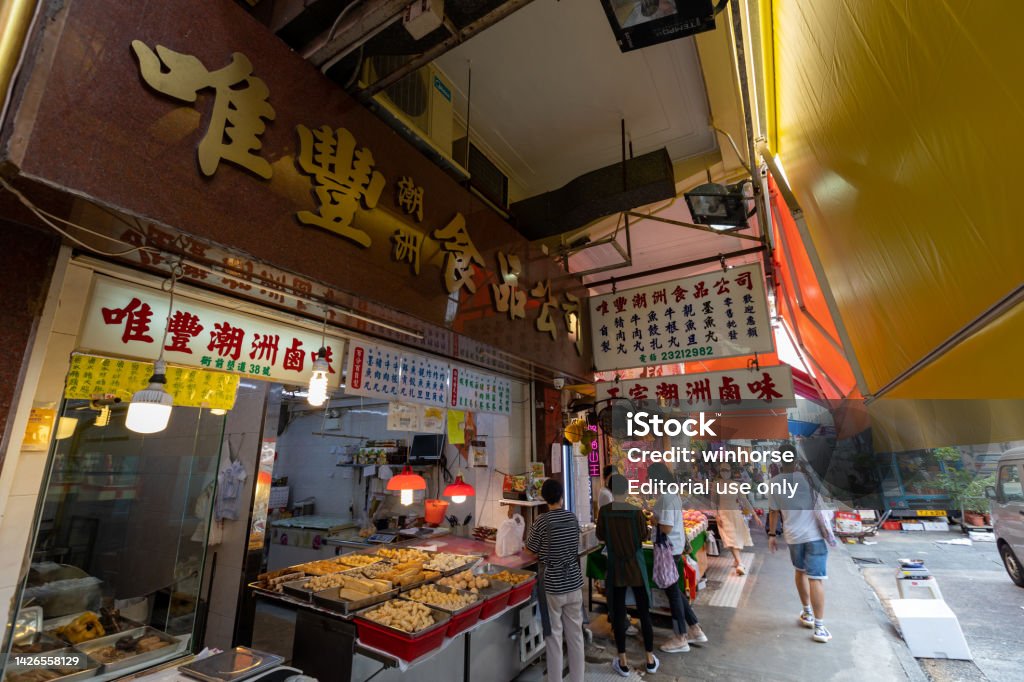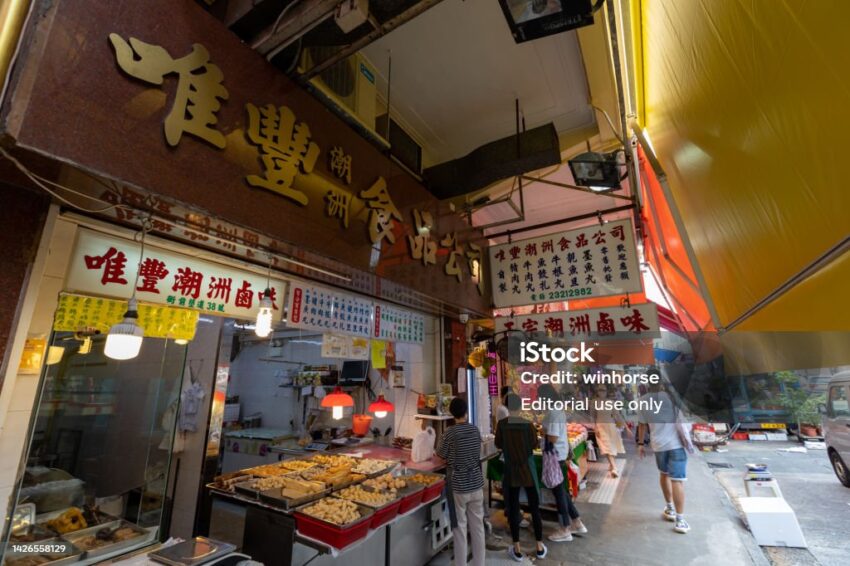
Exploring the Delicate Flavors of Chiu Chow Food: A Culinary Journey
Chiu Chow food, also known as Chaozhou cuisine, represents a fascinating branch of Cantonese cuisine originating from the Chaozhou region of eastern Guangdong province in China. Renowned for its emphasis on fresh seafood, meticulous preparation techniques, and subtle yet complex flavors, Chiu Chow food offers a distinctive culinary experience that sets it apart from other regional Chinese cuisines. This article delves into the key characteristics, popular dishes, and cultural significance of Chiu Chow cuisine, providing a comprehensive overview for food enthusiasts and culinary explorers alike.
The Essence of Chiu Chow Cuisine
What exactly defines Chiu Chow food? Several key elements contribute to its unique character:
- Emphasis on Freshness: Chiu Chow chefs prioritize using the freshest possible ingredients, particularly seafood. The proximity of the region to the sea ensures a constant supply of high-quality fish, shellfish, and crustaceans.
- Delicate Flavors: Unlike some other regional Chinese cuisines that rely heavily on bold spices and sauces, Chiu Chow food emphasizes subtle, natural flavors. Ingredients are often lightly seasoned to allow their inherent tastes to shine through.
- Meticulous Preparation: Chiu Chow cooking techniques are often elaborate and time-consuming, reflecting a commitment to culinary excellence. Dishes are carefully prepared to preserve the texture and integrity of the ingredients.
- Use of Braising: Braising is a common cooking method in Chiu Chow cuisine, used to tenderize meats and infuse them with rich flavors.
- Emphasis on Teochew Porridge (糜): Teochew porridge, a watery rice gruel, is a staple food in the Chiu Chow region. It is often served with a variety of side dishes, such as salted vegetables, preserved meats, and fermented bean curd.
Popular Chiu Chow Dishes to Savor
Chiu Chow cuisine boasts a diverse array of dishes, each offering a unique taste of the region’s culinary heritage. Here are some of the most popular and representative dishes:
Chiu Chow Steamed Fish (清蒸鱼)
Perhaps the most iconic Chiu Chow dish, steamed fish showcases the region’s emphasis on fresh seafood and delicate flavors. A whole fish, typically pomfret or sea bass, is steamed with ginger, scallions, and a light soy sauce-based dressing. The steaming process preserves the fish’s natural sweetness and tenderness, while the simple seasonings enhance its flavor without overpowering it. The key to a great Chiu Chow steamed fish is the quality of the fish itself; only the freshest catches will do.
Chiu Chow Goose (卤水鹅)
Chiu Chow goose, also known as braised goose, is another signature dish of the region. A whole goose is braised in a complex mixture of soy sauce, spices, and herbs, resulting in a tender, flavorful meat with a distinctive dark brown color. The braising liquid, known as *lou shui*, is often passed down through generations, with each family having its own secret recipe. The goose is typically served sliced, with a dipping sauce made from garlic, vinegar, and chili.
Oyster Omelette (蚝烙)
While oyster omelette is found in various parts of Southeast Asia and China, the Chiu Chow version has its own distinct characteristics. Fresh oysters are mixed with tapioca starch and eggs, then pan-fried until crispy on the edges and soft in the center. The omelette is typically seasoned with fish sauce and white pepper. The Chiu Chow oyster omelette is known for its generous portion of oysters and its light, airy texture.
Chiu Chow Cold Crab (冻蟹)
Chiu Chow cold crab is a simple yet elegant dish that highlights the natural sweetness of fresh crab. The crab is steamed or boiled, then chilled and served cold. It is typically eaten with a dipping sauce made from vinegar, ginger, and sugar. The key to a good Chiu Chow cold crab is to use the freshest, highest-quality crab available.
Fish Balls (鱼丸)
Chiu Chow fish balls are known for their bouncy texture and delicate flavor. They are made from a mixture of fish paste, tapioca starch, and seasonings, then boiled or deep-fried. Chiu Chow fish balls are often served in soups or with noodles. The secret to their unique texture lies in the vigorous pounding of the fish paste, which creates a springy, elastic consistency.
Chiu Chow Porridge (潮州粥)
As mentioned earlier, Teochew porridge is a staple food in the Chiu Chow region. It is a thin, watery rice gruel that is typically served with a variety of side dishes, such as salted vegetables, preserved meats, fermented bean curd, and braised peanuts. The porridge itself is plain, allowing the flavors of the side dishes to shine through. It is a comforting and versatile dish that can be eaten at any time of day.
The Cultural Significance of Chiu Chow Food
Chiu Chow food is more than just a collection of dishes; it is an integral part of the region’s cultural identity. Food plays a central role in Chiu Chow celebrations and social gatherings, and many dishes have symbolic meanings. For example, whole fish is often served at Chinese New Year to symbolize abundance and prosperity. Chiu Chow cuisine has also been influenced by the region’s history and geography. The proximity to the sea has led to a strong emphasis on seafood, while the region’s trade links with Southeast Asia have resulted in the incorporation of some Southeast Asian ingredients and flavors.
Finding Authentic Chiu Chow Food
While Chiu Chow restaurants can be found in many major cities around the world, finding authentic Chiu Chow food can sometimes be a challenge. Here are some tips for identifying genuine Chiu Chow establishments:
- Look for restaurants that specialize in Chiu Chow cuisine. Avoid restaurants that offer a wide range of different regional Chinese cuisines, as they are less likely to be authentic.
- Check the menu for signature Chiu Chow dishes. If the menu includes dishes like Chiu Chow steamed fish, Chiu Chow goose, and oyster omelette, it is a good sign.
- Observe the clientele. If the restaurant is frequented by people of Chiu Chow descent, it is more likely to be authentic.
- Ask for recommendations. Consult online food forums and review sites for recommendations from other food enthusiasts.
The Future of Chiu Chow Cuisine
Chiu Chow food is a culinary tradition that has been passed down through generations. While it has remained relatively unchanged over the years, it is also evolving to meet the changing tastes of modern diners. Some Chiu Chow chefs are experimenting with new ingredients and techniques, while others are focusing on preserving the traditional flavors of the cuisine. Regardless of the direction it takes, Chiu Chow food is sure to remain a beloved and cherished part of Chinese culinary heritage. The delicate flavors of Chiu Chow food will continue to delight palates for generations to come. Exploring Chiu Chow food is a journey into a rich culinary history. The essence of Chiu Chow cooking lies in its simplicity and respect for ingredients. Many find that Chiu Chow food offers a unique and satisfying experience. From steamed fish to braised goose, Chiu Chow food presents a diverse array of flavors and textures. The cultural significance of Chiu Chow food cannot be overstated. The future of Chiu Chow food looks bright, with chefs innovating while preserving tradition. Whether you are a seasoned foodie or a curious novice, Chiu Chow food has something to offer. The subtle nuances of Chiu Chow food make it a standout in the world of Chinese cuisine. Discover the magic of Chiu Chow food and embark on a culinary adventure. Seeking out authentic Chiu Chow food is a rewarding experience. The artistry in Chiu Chow food preparation is truly remarkable. Enjoying a meal of Chiu Chow food is a celebration of flavor and culture. The distinctive characteristics of Chiu Chow food set it apart from other regional cuisines. With each bite, you’ll appreciate the dedication and skill that goes into Chiu Chow food. The legacy of Chiu Chow food continues to inspire chefs and food lovers alike.
[See also: Cantonese Cuisine: A Comprehensive Guide]
[See also: Dim Sum Delights: Exploring Cantonese Brunch Culture]
[See also: The Art of Chinese Tea: A Comprehensive Guide]
